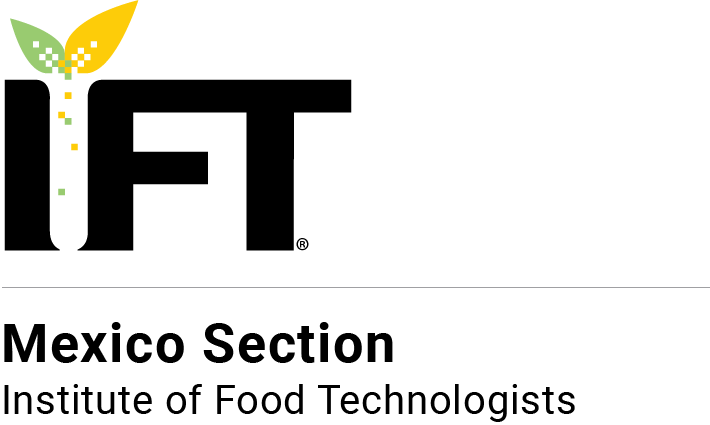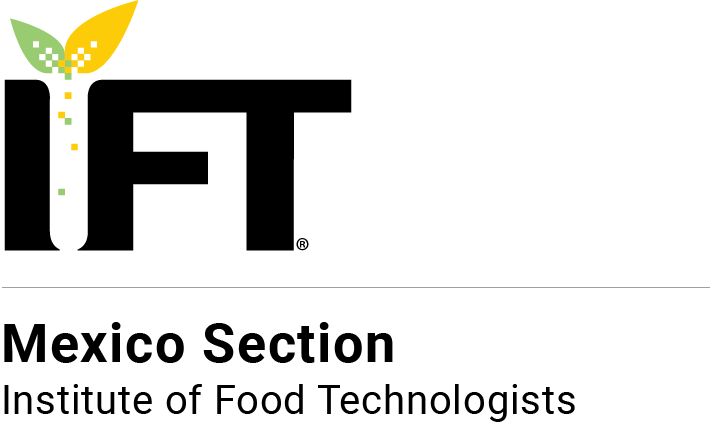The Institute of Food Technologists Partners with Mexico Section IFT to Support Global Science of Food Community
CHICAGO – September 28, 2022 – The Institute of Food Technologists (IFT) today announced it has partnered with the first IFT section in Latin America, Mexico Section IFT, to further support connection among the global food system communities and promote the science of food and its applications. The Mexico Section is the fourth international section of IFT, joining the U.K., British Columbia and Japan.
“We are thrilled to be able to collaborate with Mexico Section IFT and reaffirm our commitment toward advancing the science of food through innovation,” said IFT CEO Christie Tarantino-Dean. "The Mexico Section not only supports our efforts to diversify and expand the expertise of our membership but also brings unique perspectives to the greater IFT organization as we work to build a safe, sustainable and nutritious global food supply for all.”
Mexico Section IFT provides an opportunity for members to collaborate and strengthen connections with those at the core of the third largest food processing sector in the Americas. Currently, 9.3 million people in Mexico are involved with the generation and transformation of agricultural and fish products along with more than 800,000 workers employed by the food processing industry. The partnership with Mexico Section IFT will expand IFT’s resources and networking opportunities to one of the world’s largest food processing industries.
“We’re proud to represent IFT in our country and carry out our unified mission to promote food science and technology throughout all stages of food production,” said Mexico Section IFT President Mario Roberto Monroy. “We look forward to inspiring a new generation of Spanish-speaking food technologists while reconnecting old colleagues to cultivate a vibrant network of professionals in Mexico and across the globe.”
The Mexico Section IFT was originally formed in 1956 and saw varying periods of activity over the years. Through sheer determination, Monroy and an executive committee comprised of local science of food professionals were instrumental in making the revitalization of the Mexico Section a reality. Members of this committee include Vice President Juan Vilches of Food Innovation Studio, Secretary Cristina Chuck-Hernández with Tecnológico de Monterrey, Treasurer Antonio Araiza Bricaire of AMTEX CORP, and Marketing Leader Katya de la Fuente of MasterSense.
Mexico Section IFT is currently onsite at The Food Tech Summit & Expo and can be found at Booth 922. For more information on future events and about how science of food professionals can join this dynamic community, visit the Mexico Section IFT website.
About Institute of Food Technologists
The Institute of Food Technologists (IFT) is a global organization of approximately 12,000 individual members from more than 100 countries committed to advancing the science of food. Since 1939, IFT has brought together the brightest minds in food science, technology and related professions from academia, government, and industry to solve the world's greatest food challenges. Our organization works to ensure that our members have the resources they need to learn, grow, and advance the science of food as the population and the world evolve. We believe that science is essential to ensuring a global food supply that is sustainable, safe, nutritious, and accessible to all. For more information, please visit ift.org.
Latest News
Grape seed proanthocyanidin extract promotes skeletal muscle fiber type transformation through modulation of cecal microbiota and enhanced butyric acid production
The conversion of fast-twitch fibers into slow-twitch fibers within skeletal muscle plays a crucial role in improving physical stamina and safeguarding against metabolic disorders in individuals. Grape seed proanthocyanidin extract (GSPE) possesses numerous pharmacological and health advantages, effectively inhibiting the onset of chronic illnesses. However, there is a lack of research on the specific mechanisms by which GSPE influences muscle physiology and gut microbiota. This study aims to investigate the role of gut microbiota and their metabolites in GSPE regulation of skeletal muscle fiber type conversion. In this experiment, 54 male BALB/c mice were randomly divided into three groups: basal diet, basal diet supplemented with GSPE, and basal diet supplemented with GSPE and antibiotics. During the feeding period, glucose tolerance and forced swimming tests were performed. After euthanasia, samples of muscle and feces were collected for analysis. The results showed that GSPE increased the muscle mass and anti-fatigue capacity of the mice, as well as the expression of slow-twitch fibers. However, the beneficial effects of GSPE on skeletal muscle fibers disappeared after adding antibiotics to eliminate intestinal microorganisms, suggesting that GSPE may play a role by regulating intestinal microbial structure. In addition, GSPE increased the relative abundance of Blautia, Muribaculaceae, and Enterorhabdus, as well as butyrate production. Importantly, these gut microbes exhibited a significant positive correlation with the expression of slow-twitch muscle fibers. In conclusion, supplementation with GSPE can increase the levels of slow-twitch fibers by modulating the gut microbiota, consequently prolonging the duration of exercise before exhaustion.
Two novel angiotensin‐converting enzyme (ACE) and dipeptidyl peptidase IV (DPP‐IV) inhibiting peptides from tilapia (Oreochromis mossambicus) skin and their molecular docking mechanism
In the study, papain was used to hydrolyze tilapia (Oreochromis mossambicus) skin to obtain a tilapia skin hydrolysate (TSH) with dual angiotensin-converting enzyme (ACE) and dipeptidyl peptidase IV (DPP-IV) inhibitory activities. The resulting TSH was sequentially fractionated by ultrafiltration, size exclusion separation chromatography, and reverse-phase high-performance liquid chromatography. Its inhibitory effects on ACE and DPP-IV were determined by commercial reagent kits. Two peptides purified from TSH were identified as Gly-Pro-Leu-Gly-Ala-Leu (GPLGAL) and Lys-Pro-Ala-Gly-Asn (KPAGN) by the ultra-performance liquid chromatography–tandem mass spectrometry (UPLC–MS/MS). Inhibitory concentration (IC50) of GPLGAL on ACE and DPP-IV were 117.20 ± 1.69 and 187.10 ± 2.75 µM, respectively. IC50 of KPAGN on ACE and DPP-IV were 137.40 ± 2.33 and 259.20 ± 2.85 µM, respectively. The molecular simulation demonstrated that the binding affinities of GPLGAL to ACE and DPP-IV proteins were −8.5 and −7.4 kcal/mol, respectively, whereas those of KPAGN to ACE and DPP-IV proteins were −7.9 and −6.7 kcal/mol, respectively. GPLGAL interacted with 21 amino acid residues of the ACE active site, whereas KPAGN engaged with 19 amino acid residues. Additionally, GPLGAL interacted with 10 amino acid residues of the DPP-IV active site, whereas KPAGN engaged with 13 amino acid residues. The two peptides predominantly occupied the active sites of ACE (His513, Tyr523, and Ala354) and DPP-IV (Tyr662 and Arg125) through hydrogen bonding. This leads to the deactivation of ACE and DPP-IV.
Assessing the impact of isochoric freezing as a preservation method on the quality attributes of orange juice
Isochoric (constant volume) freezing is a novel food preservation technology that has demonstrated the ability to preserve food products at subfreezing temperatures in an unfrozen state, thereby avoiding the detrimental effects of ice formation. It minimizes the quality loss of fresh fruits and juices, increases their nutrient content, and reduces microbial counts. Orange juice (OJ) samples were subjected to conventional freezing (CF) and isochoric freezing (IF) for 7 days and then stored at 4°C for an additional 7 days. We evaluated the microbiological and physicochemical quality of CF and IF OJ before and after storage. The IF was performed at three different conditions: −5°C/73 MPa, −10°C/93 MPa, and −15°C/143 MPa. The results indicate that the total aerobic count of OJ remained below the detection limit after heat treatment, 7 days of CF and 7 days of IF. Yeast and mold counts increased in fresh and CF OJ after 7 days of storage at 4°C, whereas IF OJ remained below the detection limit. Less color difference was observed in IF (−15°C/143 MPa) OJ compared to heat-treated and CF OJ. Heat treatment inactivated 42% of pectin methylesterase (PME), whereas 7-day long IF increased PME activity up to 150%. Additionally, IF (−15°C/143 MPa) OJ showed reduced pulp sedimentation, which can be advantageous, as sedimentation in juices has been a recognized technological issue in the juice industry. Ascorbic acid level was significantly higher in IF (−15°C/143 MPa) OJ compared to fresh and CF OJ after storage.
Lactobacillus fermentum WC2020 increased the longevity of Caenorhabditis elegans via JNK‐mediated antioxidant pathway
Lactobacillus fermentum can exert antiaging effects, but their roles are strain-specific, and little is known about the molecular mechanisms in some strains. This study investigated the antiaging effects of L. fermentum WC2020 (WC2020) isolated from Chinese fermented pickles and the underlying mechanism of the action in Caenorhabditis elegans. WC2020 enhanced the mean lifespan of L1-stage and L4-stage worms by 22.67% and 12.42%, respectively, compared with Escherichia coli OP50 (OP50), a standard food source for C. elegans. WC2020-induced longevity was accompanied by an increase in body length and mitochondrial transmembrane potential and a reduction in lipid accumulation and the production of reactive oxygen species and malondialdehyde. Moreover, WC2020 increased the production of glutathione, superoxide dismutases, and catalases and altered the transcripts of many phenotype-related genes. Furthermore, WC2020-fed jnk-1 rather than akt-2 or pmk-1 loss-of-function mutants showed similar lifespans to OP50-fed worms. Correspondingly, WC2020 significantly upregulated the expression of jnk-1 rather than genes involved in insulin-like, p38 MAPK, bate-catenin, or TGF-beta pathway. Moreover, the increase in body length, mitochondrial transmembrane potential, and antioxidant capability and the decrease in lipid accumulation induced by WC2020 were not observed in jnk-1 mutants. Additionally, WC2020 increased the expression of daf-16 and the proportion of daf-16::GFP in the nucleus, and increased lifespan disappeared in WC2020-fed daf-16 loss-of-function mutants. In conclusion, WC2020 activated the JNK/DAF-16 pathway to improve mitochondria function, reduce oxidative stress, and then extend the longevity of nematodes, suggesting WC2020 could be a potential probiotic targeting JNK-mediated antioxidant pathway for antiaging in food supplements and bioprocessing.
Characterization of kombucha prepared from black tea and coffee leaves: A comparative analysis of physiochemical properties, bioactive components, and bioactivities
The utilization of coffee leaves in kombucha production has intrigued researchers; however, the lack of understanding regarding the characteristics of coffee leaf kombucha (CK) and its differentiation from black tea kombucha (BK) has impeded its application in the beverage industry. Therefore, this study aimed to characterize and compare the physiochemical properties, phytochemical compositions, antioxidant activity, and α-glucosidase inhibitory ability of kombucha prepared from the leaves of Coffea arabica (CK) and black tea (Camellia sinensis, BK) and their extracts (CT and BT). After fermentation, pH and the contents of total sugars, reducing sugars, and free amino acids of BK and CK were decreased, whereas the levels of total acids and organic acids, such as gluconic, lactic, and acetic acid were increased. Notably, the concentration of vitamin C in CK was 48.9% higher than that in BK. HPLC analysis exhibited that 5-caffeoylquinic acid in CT was significantly decreased by 48.0% in CK, whereas the levels of 3-caffeoylquinic acid and 4-caffeoylquinic acid were significantly increased after fermentation. The content of caffeine was significantly (p < 0.05) reduced by 9.5% and 22.0% in BK and CK, respectively, whereas the theobromine level was significantly increased in CK. Notably, CK has superior total phenolic and flavonoid contents and antioxidant activity than BK, whereas BK possesses higher α-glucosidase inhibitory capacity. Electronic nose analysis demonstrated that sulfur-containing organics were the main volatiles in both kombuchas, and fermentation significantly increased their levels. Our study indicates that coffee leaves are a promising resource for preparing kombucha.
Digital Exclusives

FIRST Fireside Chat Presentations
Fireside Chats bring the future into focus and discuss current trends and opportunities.

Business FIRST Presentations at IFT FIRST
The Business FIRST Stage tackles global issues and showcase trends in food, food tech, and the science of food. Business FIRST is presented by IFT's flagship magazine, Food Technology.

10 Food Trend Predictions for 2022
The editors at Food Technology magazine, published by the Institute of Food Technologists (IFT), have announced their predictions for the hottest food trends for 2022.


